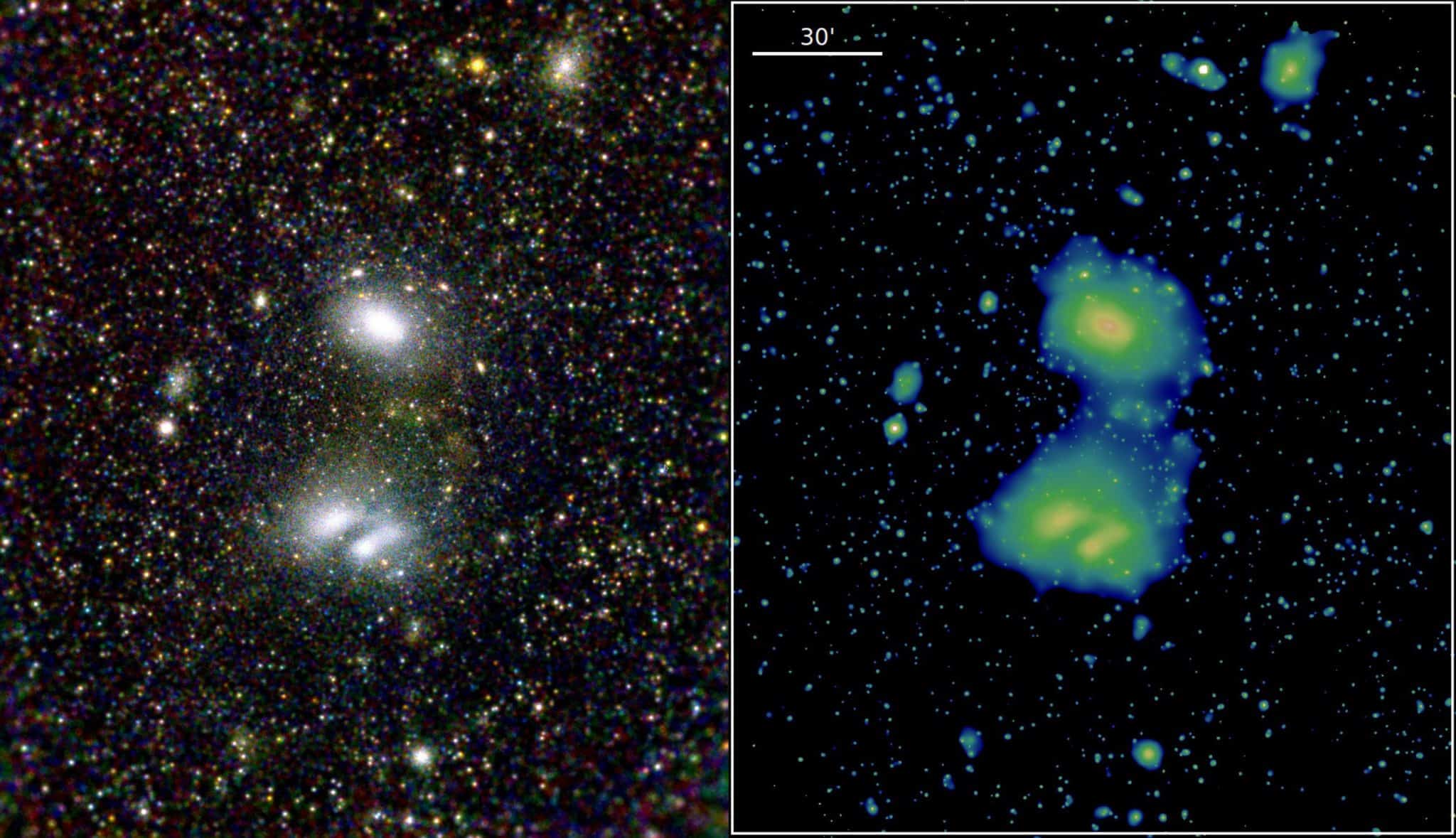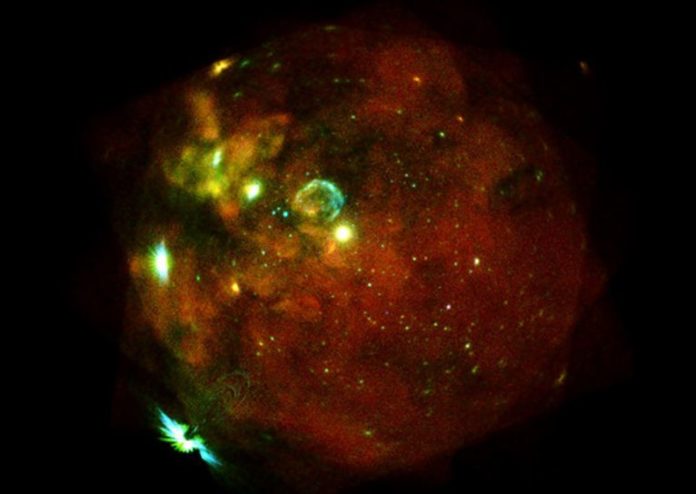The German Institute for Extraterrestrial Physics of the Max Planck Society published the first images obtained by all seven detectors of the eROSITA telescope – the main instrument aboard the Spectrum-RG space observatory. A nearby galaxy and a couple of distant interacting clusters fell into the field of vision of the device, according to a press release on the institute’s website.
Spektr-RG is a joint Russian-German space observatory of the X-ray range. There are two scientific instruments onboard: the German telescope eROSITA and the Russian ART-XC. Each of them consists of seven oblique mirror systems, which in normal operation should simultaneously observe one area in the sky, which allows to increase the effective area of the telescope and collect more data.
The main purpose of the Spectrum-RG apparatus is to compile a catalog of the entire sky in x-rays. The first 4 years out of 6.5 years of the planned service life were allotted for this. The main role in this task is assigned to the German eROSITA telescope, and the Russian device should complement the observations since it is sensitive to radiation of a harder range. We spoke in detail about the goals of the mission with the scientific adviser from the Russian side, Mikhail Pavlinsky, in the material “We will conduct a total census”.
The launch took place on July 13, 2019. Then the preparatory stage began, during which the spacecraft moved to the target orbit around the Lagrange point L2 of the Sun-Earth system, and the scientific equipment on board passed a series of tests to verify operability. The tests ended on October 13, after which full-fledged observations began, and on October 21 it became known that the last corrective maneuver had been completed and that the trajectory had reached the calculated trajectory around the Lagrange point.
At a press conference on October 22, the public was presented with the official “first light” of the eROSITA telescope, that is, obtained in the operating mode using all seven image receivers. The images show the dwarf satellite of the Milky Way, the Large Magellanic Cloud (BMO), as well as the system of interacting clusters of galaxies A3391 and A3395. The total exposure was about one day in both cases.
In BMO, eROSITA showed not only the distribution of hot gas but also individual compact and extended sources. In particular, the data obtained confirm the cooling of matter in the supernova remnant SN1987A as the shock wave from the explosion moves along the interstellar medium. Due to the large field of view of the observation telescope, several Milky Way stars located close to the BMO and several active galactic nuclei located much further away fell into the same frame.

The image shows distant clusters of galaxies that are of direct interest in the context of the Spectrum-RG mission since the main purpose of the future review is to obtain a catalog of all large clusters of galaxies in the Universe. Scientists have shown different ways of processing the source data, allowing to obtain additional information. The left half shows a combined image of clusters in pseudocolours corresponding to three different energy bands of eROSITA. The gas distribution in the system is highlighted on the right side, due to which the jumper between the clusters, consisting of a substance preheated to millions of degrees, becomes clearly visible.
